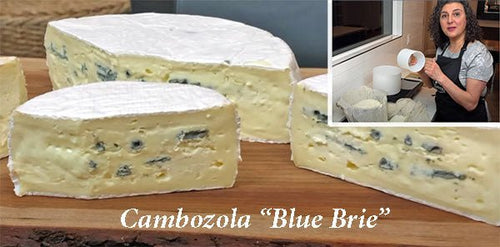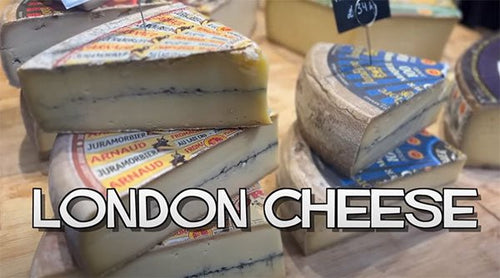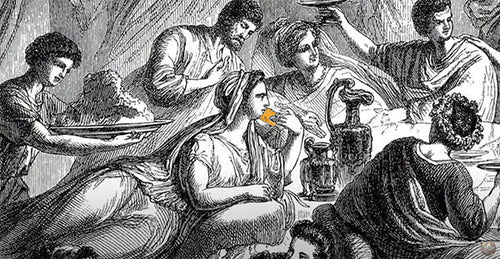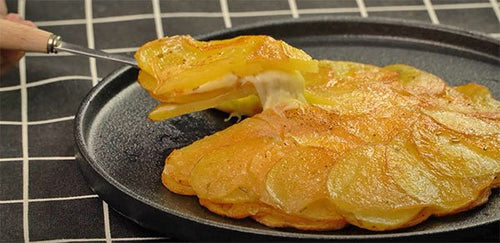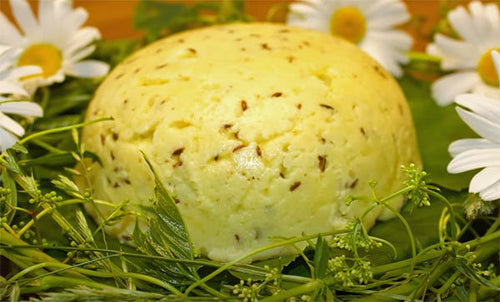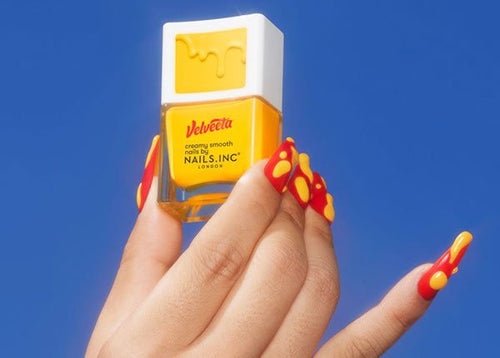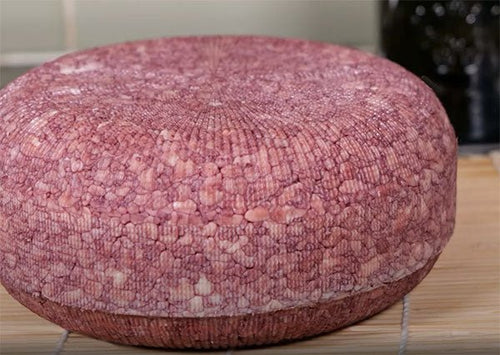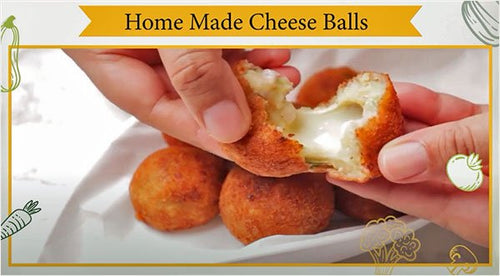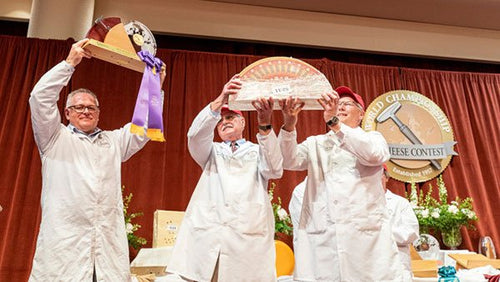Cheese Making Questions & Answers
Natural Starters - Keeping it Warm 1 Keeping it Warm 2
Q ... If I am using raw milk to make cheese is it still important to use a starter culture? why? I have read that you can use cultured buttermilk as a starter, is that true?
A... Yes .. you can sour the milk w/ the natural flora from the cow BUT what you get is going to vary .... people used to make cheese this way but they also made a lot of bad cheese ... If you were to try this today it would mean VERY clean milk from the cow .. several trials and selecting from the best for flavor (many of the samples would be just sour milk) .. then it would be up to you to maintain this culture ... I use raw milk much of the time and I have done this w/ success and failures. My ideal program for raw milk is to slightly ripen it before adding a smaller dose of proper dried culture .. this will insure that the milk gets going with the proper acid producers and the natural ones work in the background, once the cheese goes into aging .... the best of both worlds .. the new and the old.
Buttermilk is not what it was in the past .. years ago it was a byproduct of butter making and included healthy cultures .. today it is a separate product and the culture health can be quite variable.. sometimes it works sometimes no .... start with proper rennet and culture .. not because we sell it but because your time and efforts are worth it .. nothing more frustrating than getting good milk .. spending the time and having a failure.
Q... Do I just heat the milk to the required temperature, remove it, and add the starter and rennet? Do I need to keep the milk heated to that temperature for several hours or just keep the house a bit warmer, in the 70s?
A...There are easier ways than keeping the whole house above 70F ..Try using a larger pot that has a bit of warm water in the bottom.
Raise a plate up out of the water with a bowl under it
Place your draining cheeses on that .
... Keep a thermometer in the water to monitor temp
... Wrap this all in a towel.. and check every few hours and replace the warm water when it cools down...
Of course the whey will run off into the water but that just gets dumped when you change to warmer water... with a little practice you should be able to work this out just fine
See.. it's not all science .. just some good old fashioned creativity and common sense.. have fun
Q... I have questions about achieving/maintaining a certain temperature- I did look at your FAQ page and saw this question addressed in terms of using a water bath (in a sink or double boiler) but how do you regulate the temperature your milk gets to? What temperature should the hot water be when you add it to the water bath?
A... Next time before you begin try getting a big pot of water on the boil and keep it there (great for sanitrizing too). To get that big temp jump just add the boiling water quart by quart to your bath .. you will start out w/ a small differential between the curd and bath temp and as the curd hardens you can really push the difference
.. For low temp scalds(96-102F) I usually have a 7-15F difference
.. For Higher scalds (112-130F) I will have the bath running 15-30F hotter . A lot will depend on how big a batch you are working with and the volume of your waterbath
.. as you reach your final temp be ready to let some water out and add cold so that the bath equal to your target curd temp.
Chlorinated Water Can Kill Ripening Cultures
Q. I tried to make camblu and everything went fine except the surface molds which never grew at all. I bought the penicillium and geotrichum from you and I stored them properly and used them exactly as per the instructions.
I hydrated the molds with filtered water from my fridge dispenser. Could the chlorine have killed the molds or could the molds have been bad? Since I was using two molds it seems unlikely that both molds were bad, but I can't figure out what went wrong.
A. Chlorinated water is always a problem when working with molds and bacteria. Think about the fact that it is normally put in drinking water to kill things.
The other factor could be that the final cheese was dried too much for the mold to grow well. The aging space could also be too dry. Mold needs a good amount of moisture in order to thrive.
Have a cheese making question, we're here for you: info@cheesemaking.com
Who We Are
Jim Wallace the 'Tech Guy'
For Several years now Jim has been the technical person answering all of your questions as well as teaching the '201' cheese classes. Unless you have been to one of his workshops you probably know very little about Jim.
Recently Jamie Forrest (curdnerds.com) interviewed Jim and we thought we would share that with you here
Meet the Raw Milk People
They are quickly coming up to speed in ther raw milk program and making their farm more viable
Amy Klippenstein & Paul Lacinski From Sidehill Farm in Ashfield MA
For Several years now Jim has been the technical person answering all of your questions as well as teaching the '201' cheese classes. Unless you have been to one of his workshops you probably know very little about Jim.
Recently Jamie Forrest (curdnerds.com) interviewed Jim and we thought we would share that with you here
Cheese by Hand
This is a couple we met at last years ACS conference in Portland who are aspassionate about their love of cheese as we are and like us they aretrying to spread the word
Pay a visit to their site and visit Americas cheesemakers at work .. you could get lost in there.
Cheese by Hand is a project by Michael Claypool and Sasha Davies, to explore the landscape of artisan (hand-made) cheesemaking in the United States. Our goal is to capture the experience of cheese makersaround the country, in their own voices, and share them with consumers and cheese fans everywhere. We hope that this will promote understanding and support for the products themselves and also the variety of farms that make up our country’s agricultural system
In April of 2006 we embarked on a cross-country tour, visiting cheesemakers of all sizes and herd types, interviewing them about their craft and their lives. We are aiming to spend at least two days at each farm, asking questions and pitching in wherever we can. We will post blogs to our website regularly with photos and even some small audio clips to give you a full sense of the places we visit.Visit their site and visit the cheesemakers to see, hear, and learn a lot more ...
Cheese Recipe
30 Minute Mozzarella
So Many of you have asked how to make it without the microwave and in a more traditional way .. so here it is !
We have spent some time working with Rick's famous 30 minute Mozzarella Kit and have decided to work with it in a more traditional way .. without the microwave.
What we have developed is a method to produce a moister softer Mozzerella by using a sinkful of hot water to set the curd and a bowl full of very hot water for the stretching.
One of the really great things about this is that you can now make the curd one day and pull it into mozz the next..
News From Fellow Cheese Makers
Developing Natural Rinds
One of the primary features defining an artisinal or farmstead cheese is the work that goes into developing a natural rind as opposed to the waxed or plastic coated versions of industrial cheesemaking. It is these natural rinds that allow the ripening cheese to draw fresh air from their surroundings and rid themselves of the by products of ripening.
Sometime you can use a crutch in cheese making
Hi again! Attached are 3 photos of my Crutch (not Dutch) Cheese Press. Ordered a small mold from you yesterday and hope to try a cheddar this weekend with raw milk from a nearby farm. As a mostly vegetarian, would rubbing the cheese with solid vegetable shortening instead of lard (as you suggest in the book) be as effective as the lard and be okay for a long period of time? I am trying to replicate Jonathan White's cave-ripened cheddar - my ultimate cheese goal.
Hullo, Jim !
The newsletter is great! I love your site and have learned lots of things from you. I have also bought quite a few useful cheesemaking items from you, all of them excellent quality. I have been making cheese for some years now and some types are really good. I raise my own goats and when the milking season is on, I sometimes find it difficult to balance between fast consuming (and making) cheeses like boursin and feta and long maturing cheeses like the mouldy and the blues. I was wondering whether one could make good goat hard cheeses? Do you have a good recipe for something like a "goat chedar" or a "goat parmezan"?
I have quite a few interesting photos of my goats and other rustic farm animals, would they be of any interest? I live in Brazil and have a small farm 120 km away from huge São Paulo. I use raw milk and my baby goats get properly nursed by their moms, so I think my cheeses are not only good in taste, but also good in their "souls".
I attach a photo that I managed to take quite by chance!! I happened to be nearby when it happened, and we managed to help her... What do you think of it?
Hi Ricki,
I took your workshop in May and have been amazing my family and friends with mozarella ever since. My son and daughter were very impressed with the process--here's a few photos of Emily (on the right--my daughter) and me (on the left) making a batch. It was a super workshop--
I hope to come back for more lessons in the future! .....
Best wishes, Margaret LeRoux
From Dan Rothman ...
I just wanted to thank you for sharing your teachings online. I have made mozzarella for the past 6 years to sell at our local Farmers Market and am finally ready to jump into some more adventurous cheese making. I do not have any stories, good or bad to share yet but hope to have some ( more good then bad) in the near future.
The e-mail conversations you share show us wanabees that there are often simple solutions to common problems. It is very reassuring. I hope to save up enough money to take one of your classes soon.
Thanx- Dan
Please send your cheese making news & photos to: moosletter@cheesemaking.com
























































































